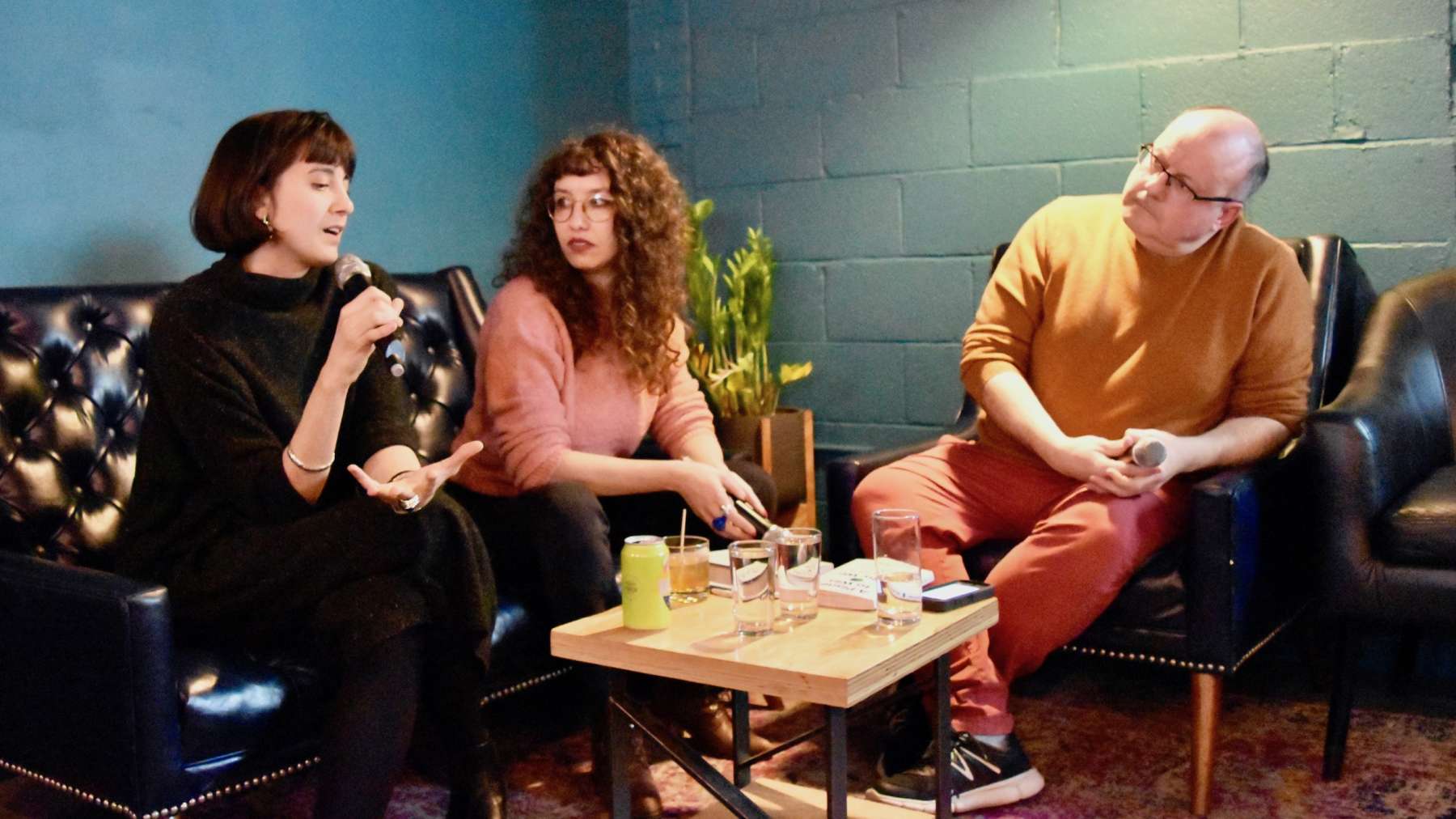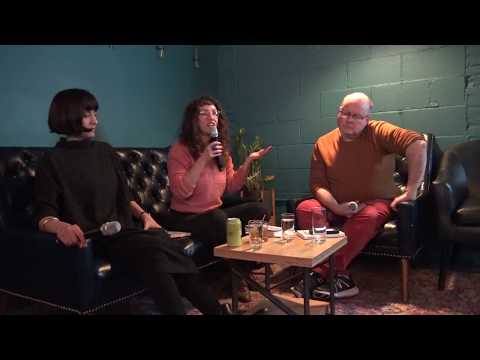A Planet to Win: Why We Need a Green New Deal
“Every single fraction of a degree matters in terms of how many people stay alive.” Two of the four authors of A Planet to Win: Why We Need a Green New Deal were at RiffRaff Bookstore in Providence to discuss their work on Tuesday evening. Thea Riofrancos and Alyssa Battistoni [note]The authors not present were Kate Aronoff and Daniel Aldana
December 4, 2019, 3:33 pm
By Steve Ahlquist
“Every single fraction of a degree matters in terms of how many people stay alive.”

Two of the four authors of A Planet to Win: Why We Need a Green New Deal were at RiffRaff Bookstore in Providence to discuss their work on Tuesday evening. Thea Riofrancos and Alyssa Battistoni [note]The authors not present were Kate Aronoff and Daniel Aldana Cohen[/note] spent over an hour talking about why “the only effective Green New Deal is a radical Green New Deal.”
The event was moderated by Damian White, Dean of Liberal Arts at the Rhode Island School of Design.
“We wanted it to be a political intervention in the present moment,” said Battistoni, a Postdoctoral Fellow at Harvard University and an editor at Jacobin, “because in the last year or so I think there’s been a pretty significant shift in climate politics.” Battistoni sees the release of the IPCC report on climate, the election of Alexandria Ocasio-Cortez to Congress, the rise of the Sunrise Movement and the introduction of the Green New Deal resolution earlier this year as indicators of this shift.
“The Green New Deal resolution was much better than I expected it to be in terms of understanding climate change not as a separate issue that you could solve with one easy trick or minor policy intervention,” said Battistoni. The Green New deal treats climate change “as something that [is] connected to our economy and society more broadly that had to be addressed through broader social and economic changes.”
The only effective Green New Deal is a radical Green New Deal
“When we think of what radical means we think about doing what the climate science demands of us but also how we build a political coalition to actually transform society in line with what the climate science demands of us,” said Riofrancos, Assistant Professor of Political Science at Providence College and the author of Resource Radicals.
When we look at the political terrain, “the first thing we see are really powerful enemies,” said Riofrancos. “Those enemies are primarily fossil fuel companies and other corporations and the ultra-wealthy that benefit from the status quo and produce the worst emissions.”
“One of our main critiques of liberal environmentalism or centrist environmentalism and the climate conversation in general is this idea that we’re all equally guilty,” said Riofrancos. “We disagree with that. We think that some people are more guilty than others and we think those people are fossil fuel companies and executives in particular. So the first chapter [of the book] looks at confronting, head on, fossil fuel executives to both build a coalition that has a clear target… There’s no way to do what the climate science demands without keeping fossil fuels in the ground and there’s no way to keep fossil fuels in the ground without defeating this political and economic enemy because they will fight with everything they’ve got to extract he wealth that’s underneath our feet.”
Riofrancos then went on to explain what kind of constituency would be needed to confront this enemy. “Historically, throughout the history of capitalism, the only way to bring about transformative change is to organize those that are exploited, excluded and dispossessed – to organize the working class, and more broadly: a broad vision of what the working class is today, as a multiracial female lead working class.”
What would jobs look like under the Green New Deal? It’s “not just thinking about hard hat solar installation,” said Riofrancos, “but also thinking about the care economy, and a feminist/socialist analysis of the type of work that’s low-carbon and caring for the planet and communities and how that broader working class might be organized.”
With both sides of the fight defined, the authors then asked, “How are we going to remake the world around us?”
“We get into the nitty-gritty of our built environment, thinking about how the homes that we live in, the transit that we use, the way that our energy systems are organized.” These are “all part of this runaway carbon emissions that have created the climate crisis,” said Riofrancos. “All of these things need to be transformed.”
The last part of the book tackles one of the key dilemmas of the Green New Deal. “We can’t actually build this beautiful, new, low carbon world without taking anything out of the earth,” said Riofrancos. “It turns out that building wind turbines and solar panels and beautiful new electrified housing and induction stoves and all these things that we do need and will create jobs and make the world a better place also require minerals that are mined from the earth and a lot of those minerals are outside of the United States, in the global south. So [in the book] we think about the ways a Green New Deal must be internationalist, must avoid replicating the patterns of extraction and exploitation that have marked fossil capitalism.” This requires considering what a “left vision of trade would look like” but also what a “grass-roots solidarity across the supply chains that produce renewable energy and the infrastructure of our built environment might look like.”
Moderator White asked how the book avoids both naive optimism and despairing gloom about a future dealing with climate change.
“It could always get worse,” said Battistoni. “That’s sort of my motto around climate change. It matters what we do to make it not as bad as it could be. Even if we know that we are going to live in a warmer world, that the climate will change and is changing and that will have serious effects… there are still things we can do to respond to that, to mitigate it, adapt to it and to not make it a truly dystopian world. Lessening degrees of warming really does matter.
“We can’t say it’s all or nothing: Utopia or Dystopia.”
“Every single fraction of a degree matters in terms of how many people stay alive,” added Riofrancos. “It seems so irresponsible to say ‘We can’t perfectly succeed and totally reverse climate change, therefore, there’s nothing we can do’ … It seems more ethically and politically sound to say ‘There’s going to be a series of battles over the next ten years and beyond, the outcomes of each of those political confrontations over climate policy, over housing policy, over transit policy, are going to make real differences.'”
“Every degree matters, every climate fight matters.”
You can watch the entire interview here:
UpriseRI is entirely supported by donations and advertising. Every little bit helps:
Become a Patron!







